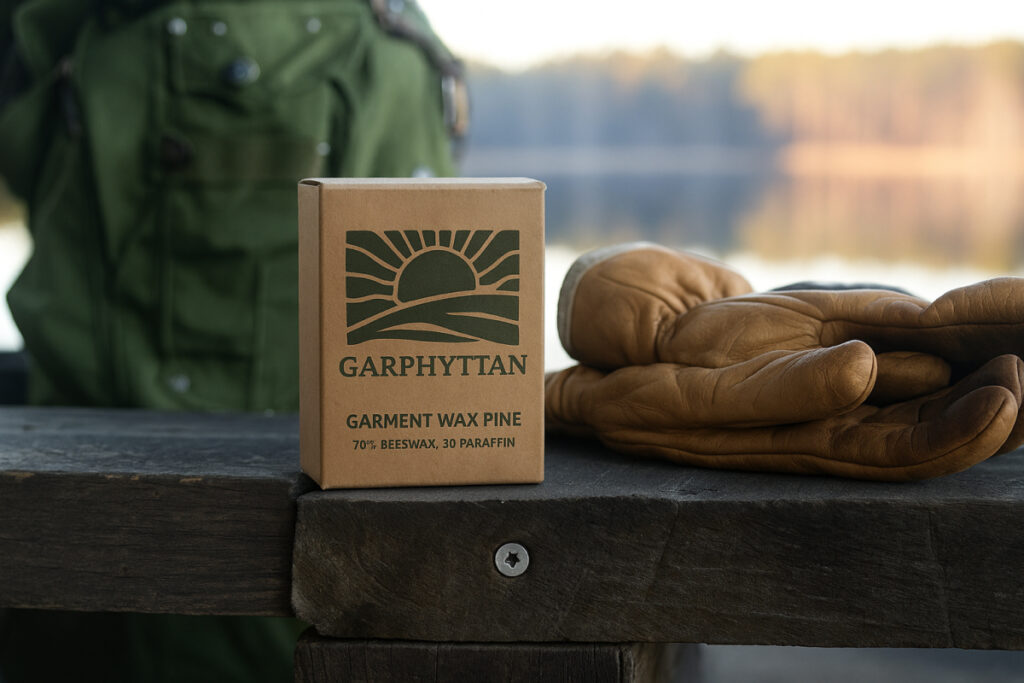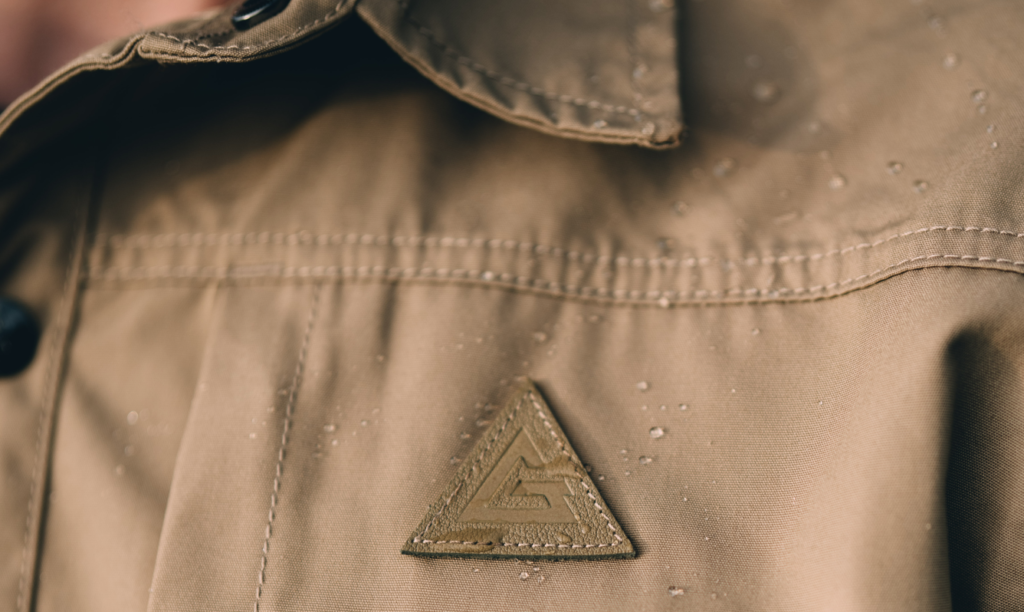Outdoor life is tough on clothing. Whether you’re chopping firewood in the rain, hiking through wet brush, or working long hours on a windswept farm, your gear faces constant exposure to the elements. And while quality garments can handle a lot, they still need care.
One of the most effective — and often overlooked — ways to protect your clothing is waxing. This simple maintenance ritual enhances water resistance, extends the life of fabrics, and brings out the true potential of your outdoor wear. At Garphyttan, we believe that taking care of your gear is part of living close to nature — and waxing is one of the best tools you have.

What Does Waxing Do?
Waxing your garments creates a protective barrier on the fabric surface. This barrier helps:
It’s particularly useful for cotton and polycotton fabrics, commonly used in workwear and outdoor clothing.
What Kind of Garments Should You Wax?
Most outer garments, especially those exposed to moisture, benefit from waxing. Ideal candidates include:
You can even apply a light layer of wax to flannel shirts — especially on high-exposure areas like the shoulders, elbows, or cuffs. This adds a bit of extra protection from wind and moisture without making the fabric too stiff — or if you simply want to freshen up your shirt with our natural pine scent.
Why Use Garphyttan’s Garment Wax?
Not all wax is created equal. Our Garment Wax is a carefully developed formula made from natural beeswax and high-quality paraffin. It’s easy to use, long-lasting, and made for performance in real-life conditions.
What sets it apart:
It’s the same wax we use ourselves — whether we’re out filming product shoots in the forest or stacking firewood at home.


Step-by-Step: How to Wax Your Garments
🔧 What You’ll Need:
1. Start with a Clean, Dry Garment
Dirt and moisture will prevent the wax from absorbing properly. Wipe off any mud, dust, or grease, and make sure the fabric is completely dry before you begin.
2. Apply Wax Evenly
Rub the bar directly onto the fabric using firm, even strokes. The wax will feel slightly sticky — that’s good. Focus on:
Use more wax if the fabric looks dry or if you’re preparing for heavy rain.
3. Set the Wax with Heat
Use a hairdryer, iron (on low), or carefully pass the garment near an open flame (e.g., camping stove — use caution). The heat will melt the wax, allowing it to soak into the fabric.
You’ll see the fabric darken slightly as the wax settles in. Let it cool for 30–60 minutes.
4. Repeat for Extra Protection
For harsh conditions — like winter storms or constant moisture — repeat the waxing process for an extra layer of protection.

How Often Should You Wax?
There’s no fixed schedule. Instead, watch for signs like:
A light re-waxing every 2–3 months keeps your gear ready for action.
Caring for Waxed Clothing
Waxed garments require a bit more care — but they’ll reward you with years of reliable performance. Here’s how to treat them:
Bonus: A well-maintained waxed shirt or jacket can last 5–10 years or more with regular use.
A Garment That Evolves With You
There’s something deeply satisfying about maintaining your own gear. When you wax your garments, you’re not just protecting them — you’re investing in a longer life, deeper utility, and a patina that tells your story.
Each crease, smudge, and softened fold reflects your work and your lifestyle. And when you step into the rain, brush against wet branches, or kneel down to split wood — your clothing will do its job, without fail.
Get Started
🧼 Shop Garphyttan Garment Wax →
🧥 See Wax-Compatible Jackets & Overshirts →
📹 Video guide coming soon.
Commonly asked questions
To wax outdoor clothing, rub the garment wax evenly onto the fabric and apply heat using a hairdryer, iron (with parchment paper), or open flame. The heat helps the wax absorb into the fibers, creating a water-repellent layer.
You can wax garments made from natural fibers or fabric blends like cotton or polycotton—especially jackets, pants, and backpacks designed for outdoor use. Avoid waxing synthetic fabrics like nylon or polyester without blends, as they may not absorb the wax properly.
Waxing clothing makes it water-repellent, not 100% waterproof. It helps water bead and roll off the fabric, making it perfect for light rain, snow, or damp conditions.
The durability of the wax coating depends on how often the garment is used and in what conditions. Generally, waxed clothing stays water-repellent for several weeks or months, but you may need to reapply after heavy use or washing.
It’s best to avoid machine washing waxed garments. Instead, brush off dirt or wipe gently with a damp cloth. Washing removes the wax, reducing water resistance and requiring reapplication.
Yes, waxing can make the fabric feel slightly stiffer and heavier, especially just after application. This stiffness is a sign of durability and protection and often softens with use.
Yes, natural beeswax is commonly used in garment wax for its water-repellent and long-lasting properties. It’s safe, effective, and helps maintain the breathability of outdoor fabrics.
Rewax your clothing as needed, depending on use and exposure. A good rule is to rewax when water no longer beads on the surface or if the garment looks dry or faded in high-friction areas.
Yes, you can carefully use the radiant heat from a campfire or camping stove to melt the wax into the fabric when you’re outdoors. Always be cautious not to burn the garment.
Waxing enhances water and dirt resistance, extends garment life, improves durability, and offers a natural alternative to synthetic water-repellent treatments.
We use cookies to enhance your browsing experience, serve personalised ads or content, and analyze our traffic. By clicking “Allow all”, you consent to our use of cookies.